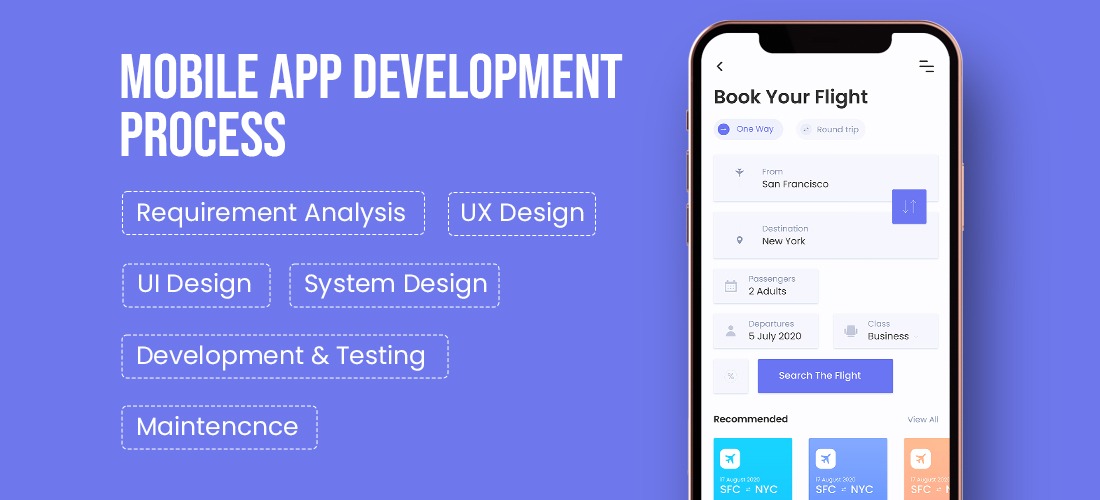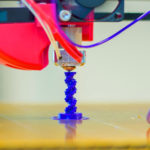Creating a unique user experience is crucial for every successful app in the digital age, where mobile apps have become a fundamental part of our daily lives.
You’ve come to the correct place if you’re interested in learning the techniques behind appealing mobile app design, whether you’re a seasoned app developer, an aspiring designer, or just curious.
In this piece, we will delve into the fundamental principles that set apart outstanding mobile app designs.
Our blog will provide you with the information and insights you need to make wise design decisions that promote user enjoyment and app success, whether you’re developing an app for iOS or Android, targeting a specific market or a worldwide audience.

User-Centric Approach
Understanding the wants, objectives, and pain points of the user is essential when placing them at the center of the design process.
Conduct user research to learn more about their tastes, routines, and actions.
To represent various groups of your target audience, create user personas.
These personas serve as representations of the common traits and motives of your consumers, which helps design decisions.
You can create an app that tackles certain user issues and offers a smooth experience by using a user-centric design strategy.
You can iterate on your design and continually enhance the user experience of the app based on actual user input by involving users in usability testing and feedback sessions.
Simplicity and Clarity
Simplicity should be prioritized in mobile app design to prevent confusing consumers with needless complications.
Aim for a simple, uncluttered interface that effectively conveys its goal. Users may become confused by a cluttered interface, which makes it challenging for them to access the information or carry out the necessary tasks.
Use easy-to-understand navigation patterns that consumers are accustomed to from other mobile apps, including bottom tabs or the hamburger menu.
Use plain language and stay away from jargon.
In order to lessen the necessity for text labels, icons should be quickly recognizable and self-explanatory.
The overall clarity of the software is further enhanced by consistent design elements and user interface interactions.
Consistent UI/UX
A critical component of mobile app design is consistency.
The app’s panels and parts should be easy for users to navigate without becoming lost.
A sense of familiarity brought about by consistency boosts user confidence and lowers the learning curve.
A consistent style guide should be followed by the visual design elements, including color schemes, typography, and iconography.
Common items like buttons and menus should have a uniform layout and location throughout the app.
The user experience is further improved by interactions that flow consistently, such as button taps or swipe movements.
Responsive Design
Your software will work on different screen sizes and orientations on different devices, such as smartphones and tablets, thanks to responsive design.
Your software should be usable and appealing on all mobile devices, given the growing variety of them.
Use adaptable layouts that change according to the amount of screen space that is available.
When sizing elements, use relative units (such as percentages) as opposed to fixed pixels.
To find and fix any layout issues, test your app on several platforms and screen sizes.
App Performance
The user experience is directly impacted by app performance, which is a crucial component of mobile app design.
Users anticipate that apps will load swiftly and respond to their inputs right away.
App performance must be optimized, thus designers must use a variety of techniques.
Images and videos can be compressed to make them smaller and load more quickly.
Reducing the number of HTTP queries makes the app less reliant on server requests, which speeds up data retrieval. Lazy loading guarantees that content only loads when required, speeding up initial load times.
Designers can avoid performance bottlenecks brought on by high CPU and memory utilization by optimizing and keeping animations light.
Thumb-Friendly Design
Thumb-friendly design is essential for boosting usability, especially given the predominance of one-handed mobile device usage.
The size of touch targets, such as buttons and interactive features, must be considered by designers to allow for comfortable thumb tapping.
To support different thumb sizes, a minimum touch target size of 48×48 pixels is advised.
To avoid unintentional taps and boost accuracy when using one hand, touch targets must be properly spaced apart.
In order to maximize the app’s usability for single-handed interactions and contribute to a better user experience, designers should also take the device’s screen size and the positioning of crucial components into account.
Visual Hierarchy
A design technique called visual hierarchy arranges components on a screen to direct users’ attention and make it easier for them to absorb information.
Designers intentionally employ a variety of design components to create a visual hierarchy.
The size of the element is important since bigger elements tend to get more attention.
Brightness and contrast in color can also be utilized to direct attention to key components.
Users can be guided through the text with the help of typography, such as bold fonts for headings and larger fonts for important information.
A clean, organized structure with enough white space around parts makes it simpler for consumers to concentrate on the most important details.
A well-designed visual hierarchy improves user engagement and comprehension, making using the app more pleasurable and fulfilling.
FAQs
Should I design for iOS or Android first?
The decision to design for iOS or Android first depends on your target audience and business goals.
If your app is for a specific platform or region, it’s best to start with that platform.
However, if you aim to target both iOS and Android users, you can choose to design for the platform that aligns with your app’s core features or design for both simultaneously.
What role does user research play in the creation of mobile applications?
An understanding of your target users’ needs, preferences, pain areas, and behaviors is essential while designing a mobile app.
You may develop a user-centered design that answers actual user demands and increases user pleasure and engagement by performing user research.

Final thoughts
Keep the fundamentals of mobile app design in mind while you investigate the newest trends and technology.
You should continuously test, iterate, and gather user input to improve your software. Above all, embrace the design process for mobile apps.
Every project offers the chance to develop professionally, learn new skills, and push the limits of what is practical.
Keep an open mind, remain inquisitive, and let inspiration come to you from unexpected places.
























